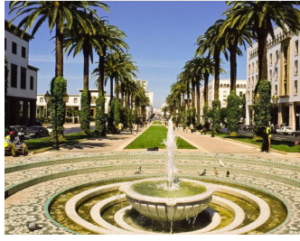The floor-to-ceiling decoration here was begun by Grand Vizier Si Moussa in the 1860s and embellished from 1894 to 1900 by slave-turned-vizier Abu ‘Bou’ Ahmed. In 1908 the palace’s beguiling charms attracted warlord Pasha Glaoui, who claimed it as a suitable venue to entertain French guests. They, in turn, were so impressed that they booted out their host in 1911, installing the protectorate’s president-general in his place.
Though today only a portion of the palace’s eight hectares and 150 rooms are open to the public, there’s still plenty of ornamental frippery on show. While admiring the tranquil grand courtyard with its floor laid in white Carrara marble, remember this is where people waited in the sun for hours to beg for Bou Ahmed’s mercy. Bou Ahmed’s four wives and 24 concubines all lived in the lavish interiors of the harem’s small salons.




